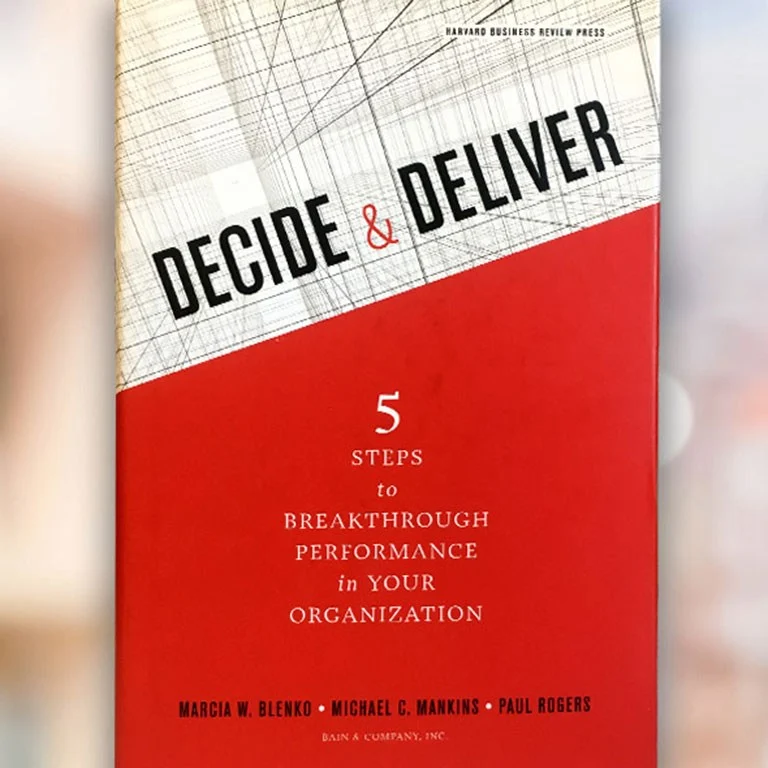Forbes.com
Most organizations know they must clearly identify the individual or group responsible for making every major decision. If they don’t, big decisions can disappear into a swamp of internal politics and finger pointing.
But too many organizations stop with the decision maker. They fail to realize that every major decision involves several essential supporting roles, and that these roles are often the key to success. We described these roles in an earlier post about RAPID®, which is what we call our decision-rights tool. If the decision maker has the ‘D,’ as we like to say, then the supporting roles can be dubbed the ‘R,’ the ‘A,’ the ‘P’ and the ‘I.’
Here’s what’s involved in each supporting role:
• Recommend. Whoever has the R role gathers relevant data and opinions and proposes a course of action or a set of alternatives. A good R should map out the process at the start and involve other people at appropriate points along the way. Effective R’s and their teams usually do 80 percent of the work involved in a decision.
• Input. The I group—people who offer input into the recommendation—should include everyone with relevant information, expertise or experience. It’s a critical role, as the folks who offer input often shape thinking and influence the outcome. Most companies find it helpful to include people responsible for execution in this group—it increases buy-in and helps avoid potential implementation issues.
• Agree. A is a form of input, but it is one that can’t be ignored. If the person holding an A doesn’t agree, the recommendation must be modified. Legal and regulatory are the classic A’s, but other A’s might be brand managers or financial executives. Effective A’s don’t just veto recommendations; instead, they help the R think of new approaches to create a proposal that will work.
• Perform. The P role specifies who is accountable for implementation. Without a clear P, nothing happens.
It’s easy to identify the roles. What’s harder is to get them right, so that decisions work smoothly and the organization hums.
Take the Input role, for example. Companies with inclusive cultures often have way too many I’s. Unnecessary people in meetings clog up the decision process. Senior executives get involved in topics that are best delegated. One consumer products company developed a process to ensure that top leaders focused only on major innovations. That was a wise move, but unfortunately the company never spelled out which decisions required the executives’ input. Soon they found themselves arguing about matters such as the height of the letters on product packages rather than about more important issues.
Companies can run into a variety of A-related difficulties as well. A recommendation may be missing an essential A—and when the absence is discovered, the decision has to be revisited. Some people in the A role may wait for the decision rather than weighing in on the recommendation; when they finally raise their concerns, they undermine the decision maker’s authority and cause further delay. Occasionally a company will assign an A to a senior executive just because that individual “should have a chance to weigh in.” But that confuses the I role with the A.
One useful tip about A’s: you can reduce the need for constant signoffs by providing guidelines governing recurring decisions. Only if a decision goes outside the guidelines does it require an approval from someone in an A role.
Decisions are a team sport. Specifying who’s responsible for making a major decision—assigning the D—is obviously critical, but it’s less than half the story. D’s can’t do their job without great recommendations, insightful input, the right signoffs and accountability for execution.
This post was written by Marcia Blenko, Michael Mankins and Paul Rogers, co-authors of Decide & Deliver, and partners in the Organization Practice at Bain & Company.

Decide & Deliver
Learn more about the five steps that leading organizations use to make great decisions quickly and execute them effectively.